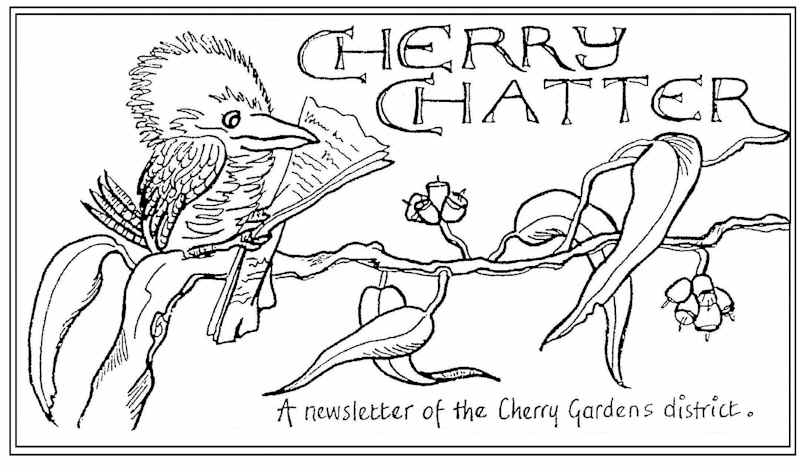Elm Leaf Beetle
I have noticed that there are a number of significant Elm Tree’s in our district that are suffering this year. Their leaves appear like skeletons as if something is eating away at them – and there is! We have 3 Elm Trees in our place and 2 years ago I noticed that the leaves appeared to be getting eaten so I made some enquiries and found that we have Elm Leaf beetles.
I had heard of them many years before but was shocked to find them here in Cherry Gardens. I did a bit of research and found that the elm leaf beetle has become established in the suburbs of Adelaide and has infested many trees across the city and Hills. Elm leaf beetle causes cosmetic damage to elm trees when grubs feed on the leaves. Some leaves develop a ‘shot-hole’ or lacey appearance and others may be almost completely eaten. The beetles lay eggs on the leaves and when the grubs hatch they eat like crazy and hence the leaves get lots of holes throughout them.
While the grubs put elm trees under stress the trees usually recover when new leaves grow in the spring however if the tree is under stress, such as not being watered enough, then after a couple of seasons the tree will likely die. Summer heat waves can kill adult elm leaf beetles, with large numbers falling from trees on hot days, but reinfestation is common and typical. Infested trees can be treated with a systemic insecticide which is usually applied during spring.
An arborist can either inject the pesticide directly into the tree’s sapwood or, if it is a young tree, apply a drench to the soil in the tree’s root zone. Treatment should protect trees against elm leaf beetle for up to two years. During this time adult beetles will be seen in the trees but grubs feeding on the leaves will be killed by the residual pesticide. Pesticides should only be applied as a ‘last resort’, with more environmentally friendly options being explored first.
Another method to help reduce the numbers of grubs and beetles is to wrap the trunk of the tree with duct tape placed around the trunk with the sticky side facing out so that all the grubs and beetles get stuck to the tape. Once the tape is full of grubs it needs to be discarded and a new lot put on. Do it regularly.
Improving tree health organically can reduce the stresses caused by elm leaf beetle. Consider reducing grass growth beneath trees, instead covering the soil with a 50 – 75 mm deep layer of mulch and compost. Irrigating the trees with a drip system or running some water from a roof downpipe into the tree’s root zone will also greatly aid tree health and speed the recovery after browsing by elm leaf beetle grubs.
If you would like advice on how to treat a tree on your property you are able to consult a local arborist; contact details can be found in the Yellow Pages and some contractors also advertise in the Messenger Press.


